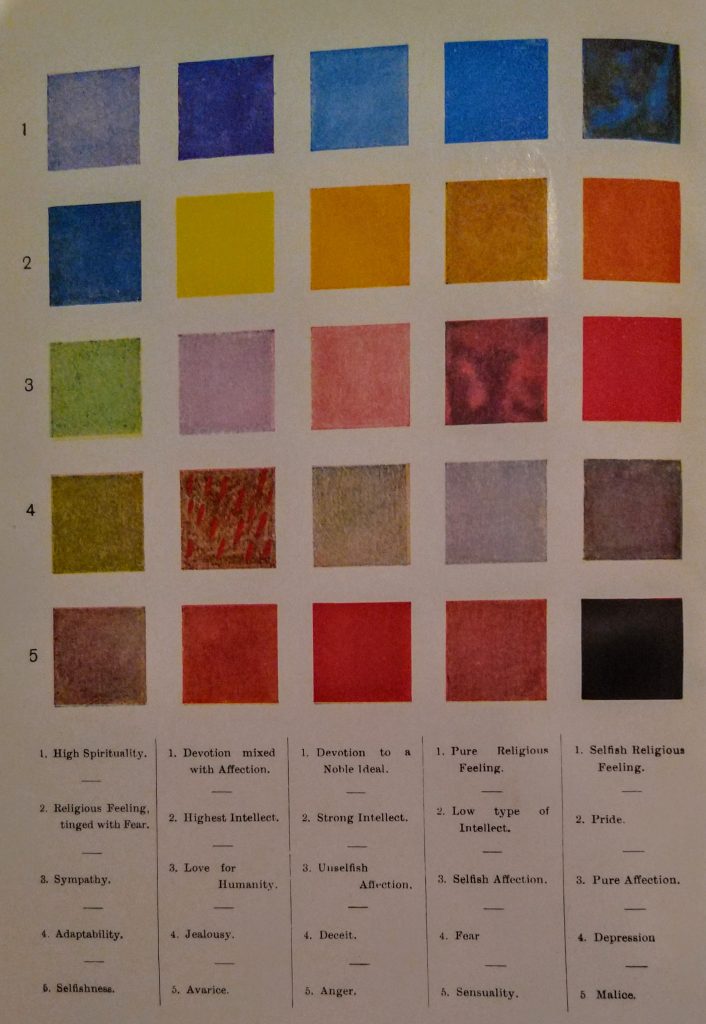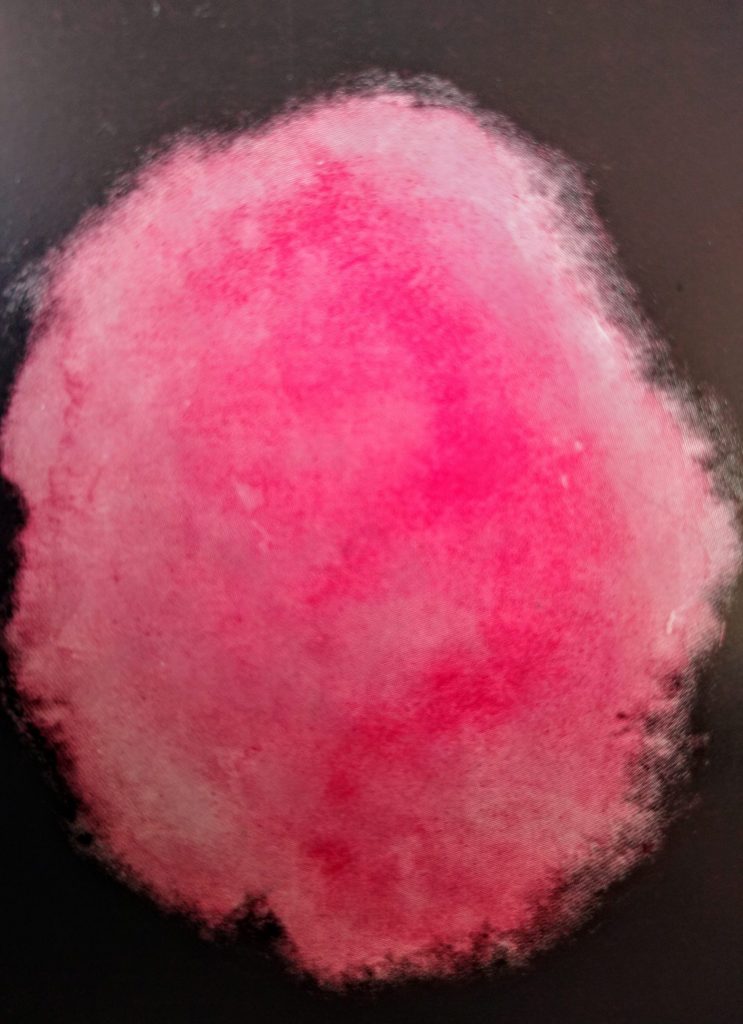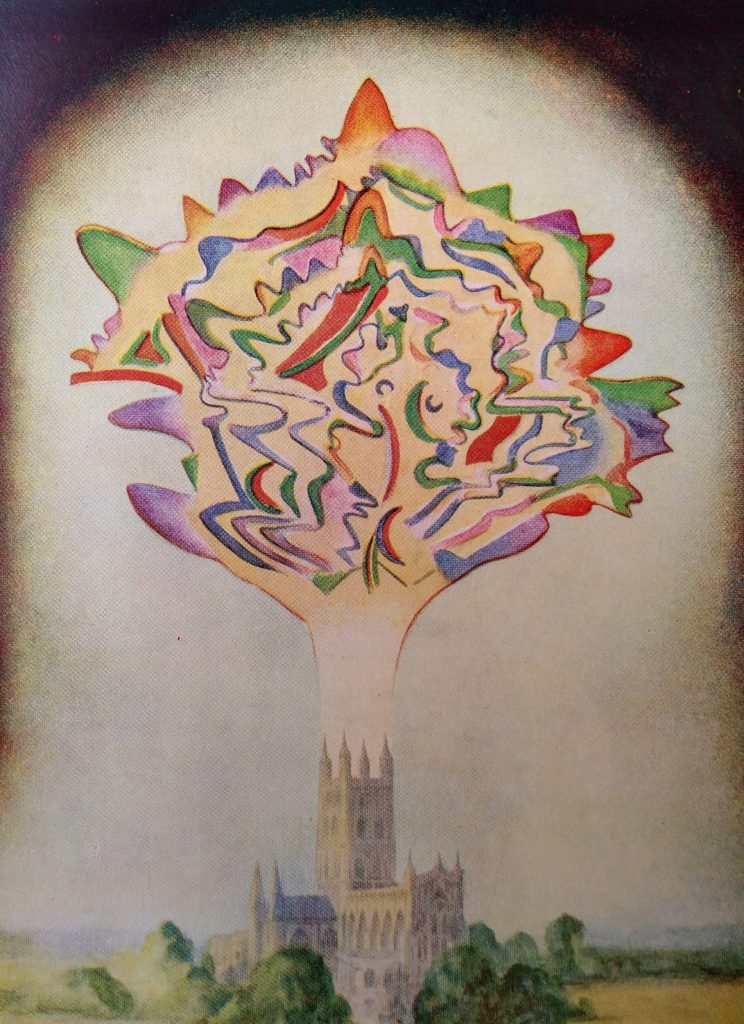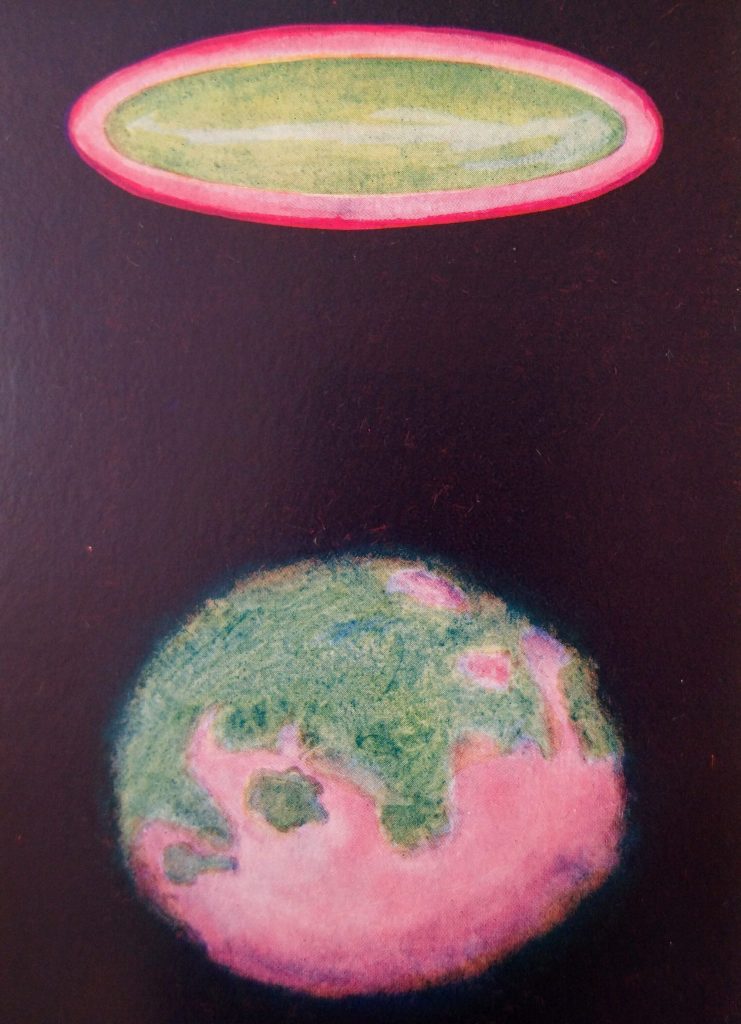Thought Forms by Annie Besant and C W Leadbeater published by The Theosophical Publishing House Ltd, London. First printed in 1901 (2nd print 1905, 3rd print 1925)
“We have often heard it said that thoughts are things, and there are many among us who are persuaded of the truth of this statement. Yet very few of us have any clear idea as to what kind of thing a thought is, and the object of this little book is to help us to conceive this.“
Foreword by Annie Besant: The text of this little book is the joint work of Mr Leadbeater and myself; some of it has already appeared as an article in Lucifer (now the Theosophical Review), but the greater part of it is new. The drawing and painting of the Thought Forms observed by Mr Leadbeater or by myself, or by both of us together, has been done by three friends—Mr John Varley, Mr Prince, and Miss Macfarlane, to each of whom we tender our cordial thanks. To paint in earth’s dull colours the forms clothed in the living light of other worlds is a hard and thankless task; so much the more gratitude is due to those who have attempted it. They needed coloured fire, and had only ground earths. We have also to thank Mr F. Bligh Bond for allowing us to use his essay on Vibration Figures, and some of his exquisite drawings. Another friend, who sent us some notes and a few drawings, insists on remaining anonymous, so we can only send our thanks to him with similar anonymity.
It is our earnest hope—as it is our belief—that this little book will serve as a striking moral lesson to every reader, making him realise the nature and power of his thoughts, acting as a stimulus to the noble, a curb on the base. With this belief and hope we send it on its way.

Thought Forms: A Record of Clairvoyant Investigation may have been described by Annie Besant as little, but its impact on avant garde artists was huge. Kandinsky in his quest for abstraction was just one artist it influenced. It was originally published in 1901 in London, but was based on research from 1895 when the authors had started an investigation into “the subtle matter of the universe.” Besant and Leadbeater were interested in the work of the human mind which they believed extruded into the external world as thought-forms. From a Theosophical point of view, it concerns the visualization of thoughts, experiences, emotions and music. Drawings of the “thought-forms” were executed by artists John Varley, who was a descendent of the William Blake associate, John Varley, Mr Prince, and Miss McFarlane. Minimal information is available on he latter two. Some of the original drawings were recently discovered at the Theosophical Society in India and research into the artworks and their influence continues.


